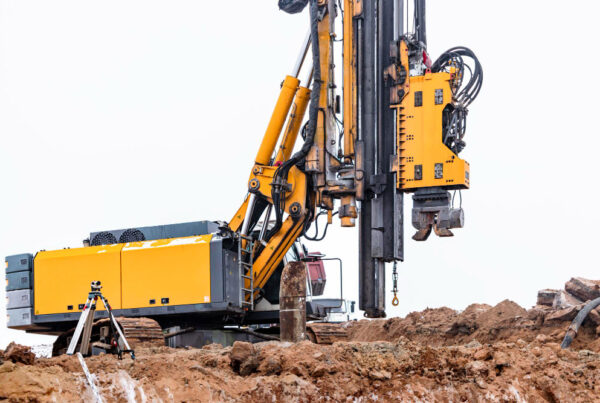Foundation Piles play a vital role in supporting structures, distributing loads, and ensuring stability in construction projects. Understanding the different types of foundation piles, their uses, and proper installation methods is essential for engineers, contractors, and anyone involved in the construction industry. In this comprehensive guide, we’ll delve into the world of foundation piles, exploring their various types, applications, and the key considerations for successful installation.
1. What are Foundation Piles?
Foundation piles are structural elements driven into the ground to transfer loads from a structure to deeper, more stable soil or rock layers. They provide support and stability for buildings, bridges, retaining walls, and other structures, especially in areas with weak or compressible soil conditions.
2. Types of Foundation Piles:
a. Steel H-Piles: Steel H-piles are commonly used in heavy-duty applications, such as high-rise buildings and bridges. They consist of wide flange beams or H-shaped sections driven into the ground using impact hammers.
b. Concrete Piles: Concrete piles are precast or cast-in-place cylindrical or square-shaped elements made of reinforced or prestressed concrete. They offer versatility and can be used in various soil conditions.
c. Timber Piles: Timber piles are wooden poles or logs driven into the ground to support light to moderate structures. They are cost-effective and suitable for temporary or marine applications.
d. Composite Piles: Composite piles combine different materials, such as steel, concrete, or fiberglass, to optimize strength, durability, and corrosion resistance. They are ideal for challenging soil and environmental conditions.
e. Helical Piles: Helical piles feature helical-shaped plates welded to a central shaft, allowing for screw-like installation into the ground. They are used in areas with limited access or sensitive environmental conditions.
f. Micropiles: Micropiles are small-diameter piles typically installed using drilling methods. They are ideal for restricted or confined spaces and can be used to retrofit existing structures.
3. Uses of Foundation Piles:
a. Building Foundations: Foundation piles provide support for residential, commercial, and industrial buildings, ensuring stability and preventing settlement.
b. Bridge Construction: Piles are used to support bridge abutments, piers, and foundations, transmitting loads from the bridge structure to the underlying soil or bedrock.
c. Retaining Walls: Piles are employed in the construction of retaining walls to resist lateral earth pressure and prevent soil erosion.
d. Wharves and Marine Structures: Piles support docks, wharves, and marine structures, withstanding wave, current, and tidal forces.
e. Transmission Towers: Piles serve as the foundation for transmission towers, supporting overhead power lines and electrical infrastructure.
f. Offshore Platforms: Piles provide stability for offshore oil rigs, wind turbines, and other offshore structures, anchoring them to the seabed.
4. Installation Methods:
a. Driven Piles: Driven piles are installed by driving them into the ground using impact hammers or vibratory drivers. The pile is continuously driven until it reaches the desired depth or resistance.
b. Bored Piles: Bored piles are installed by drilling a hole into the ground using augers or drilling rigs. After the hole is drilled, reinforcement and concrete are placed to form the pile.
c. Screw Piles: Screw piles are installed by rotating them into the ground using hydraulic torque motors or machinery. The helical plates on the pile create a screw-like motion, driving the pile into the soil.
d. Jacked Piles: Jacked piles are installed by pushing or jacking them into the ground using hydraulic jacks or mechanical force. This method is suitable for sites with limited overhead clearance.
Conclusion:
Foundation piles are indispensable elements in construction projects, providing essential support and stability for structures of all types. By understanding the different types of foundation piles, their uses, and proper installation methods, engineers and contractors can ensure the success and longevity of their projects. Whether supporting buildings, bridges, marine structures, or offshore platforms, foundation piles play a crucial role in the built environment, laying the groundwork for safe, resilient, and sustainable infrastructure.






